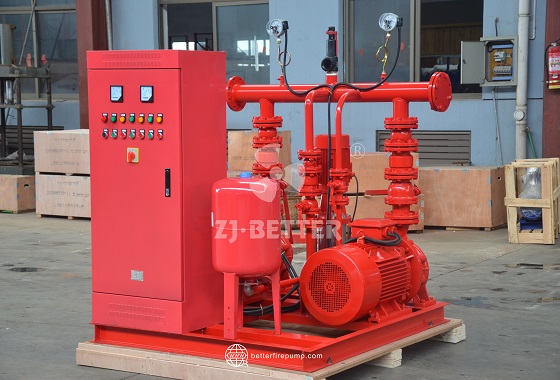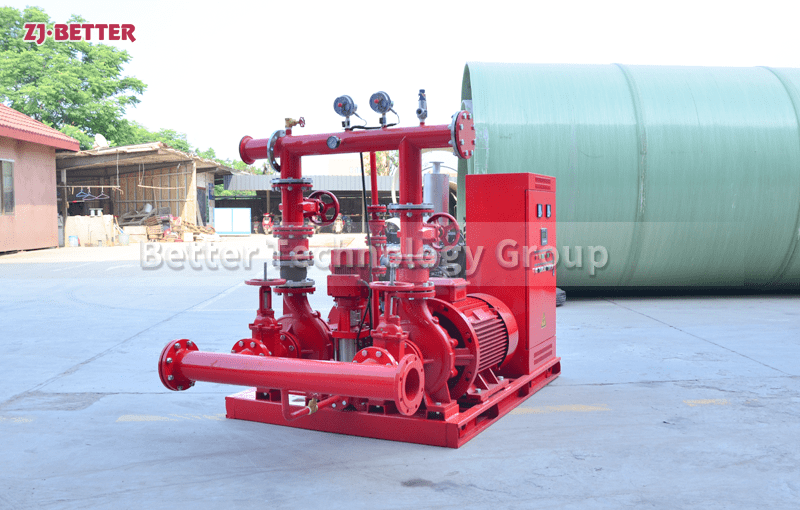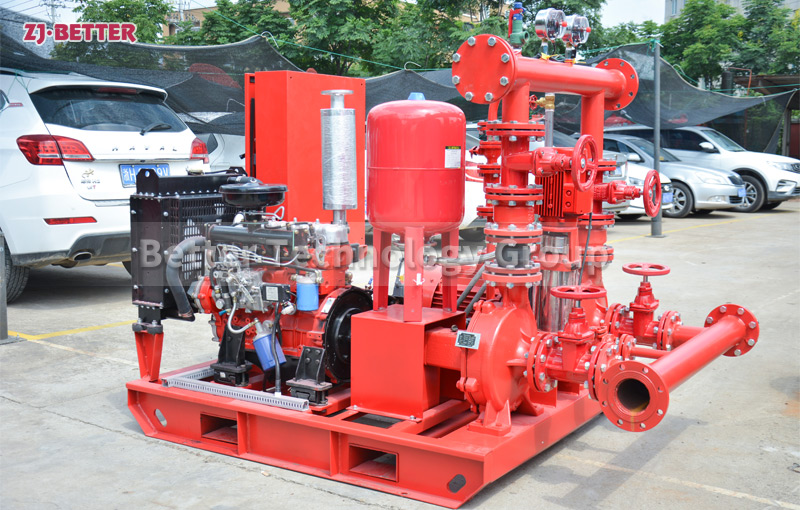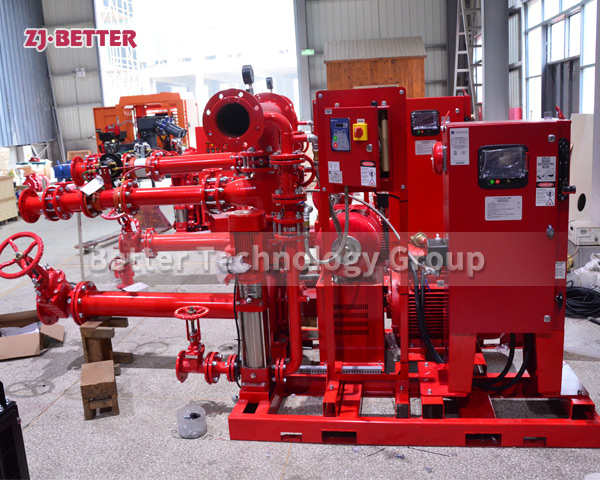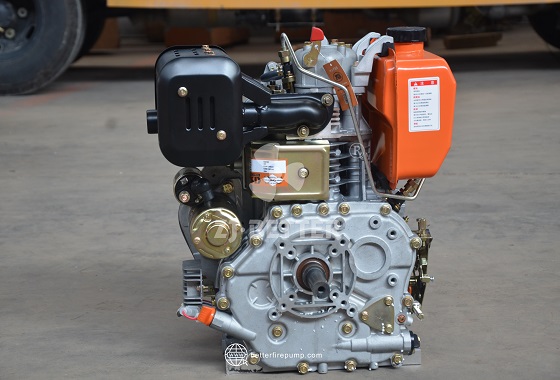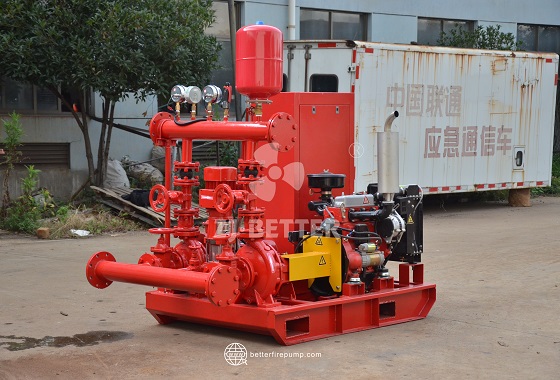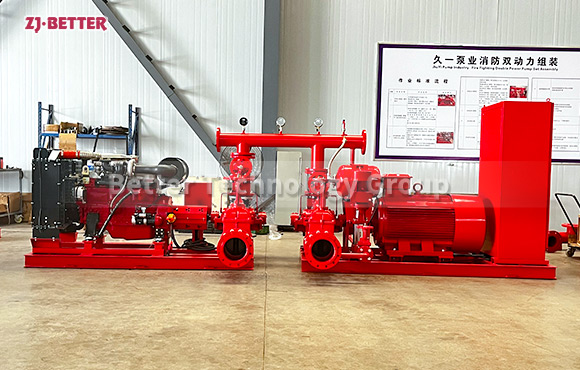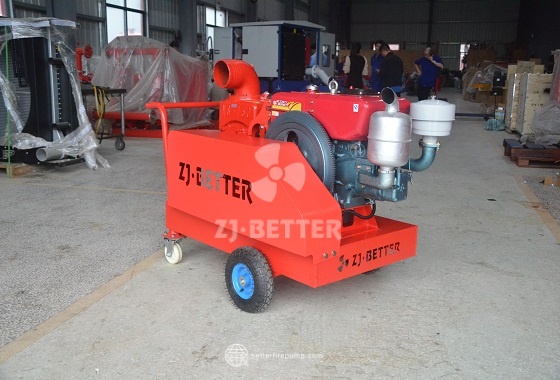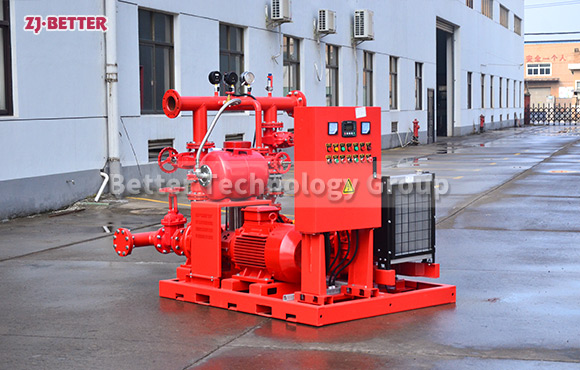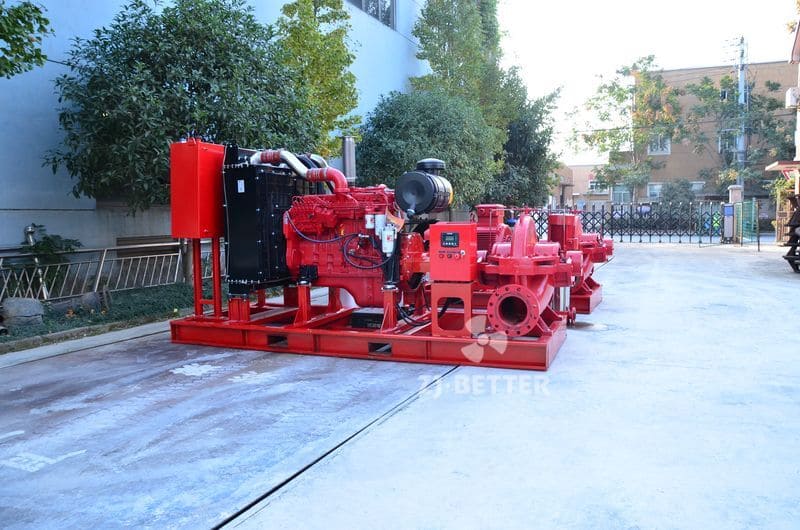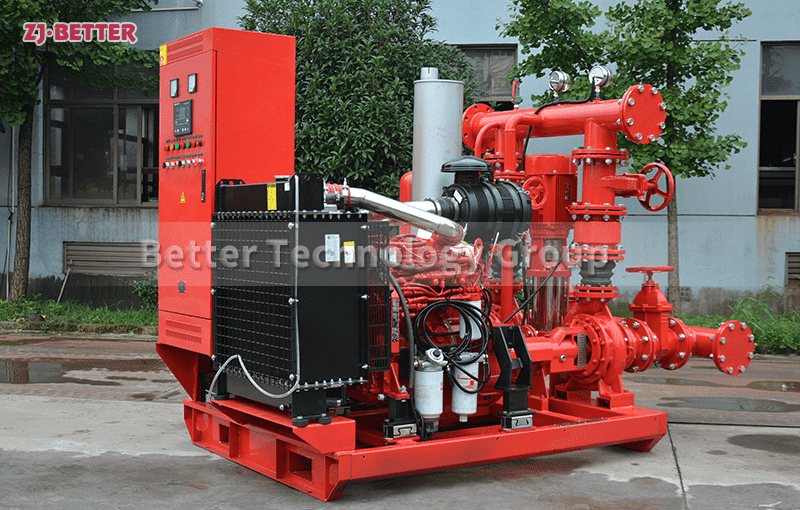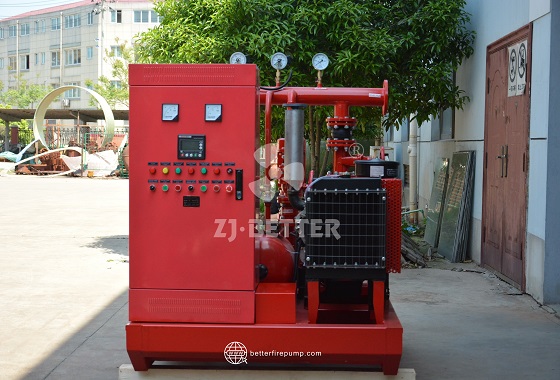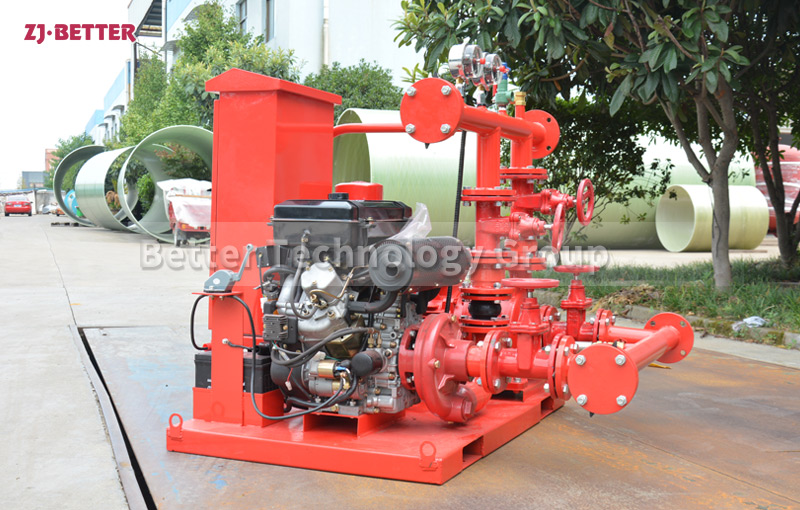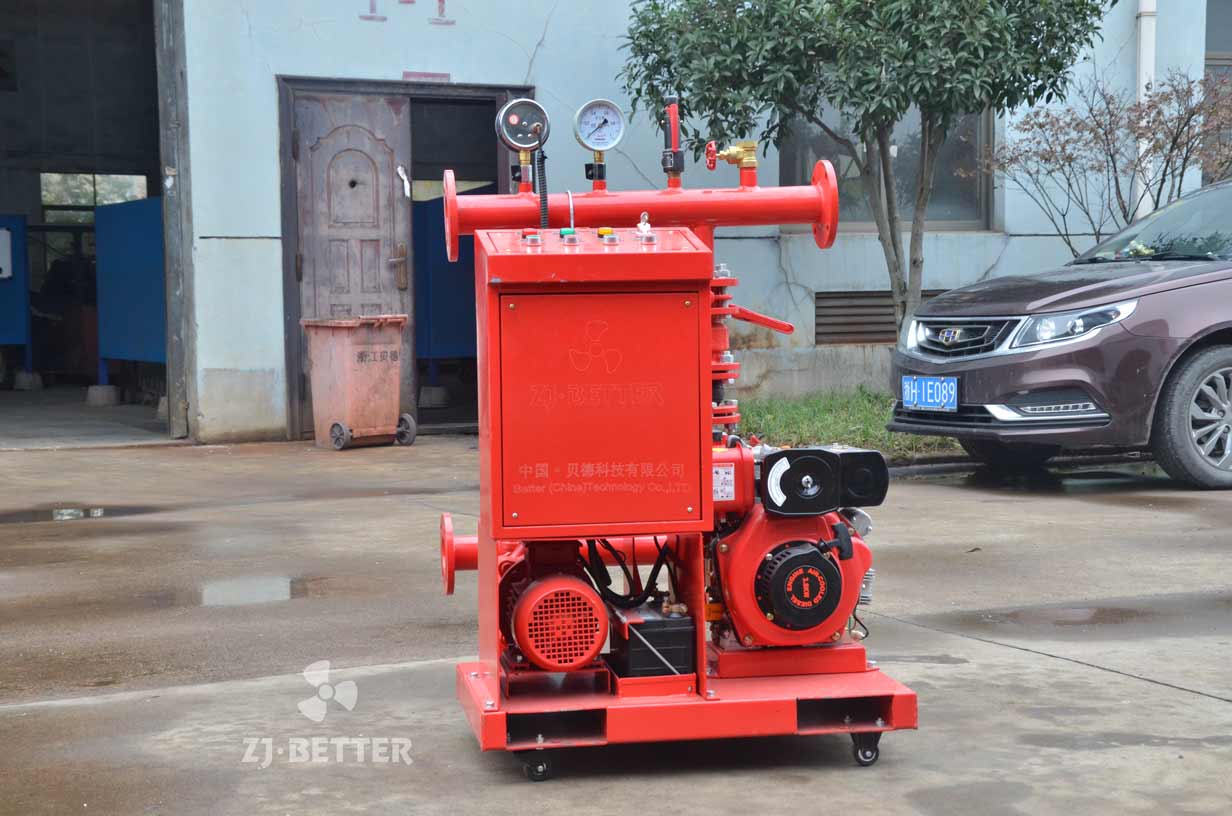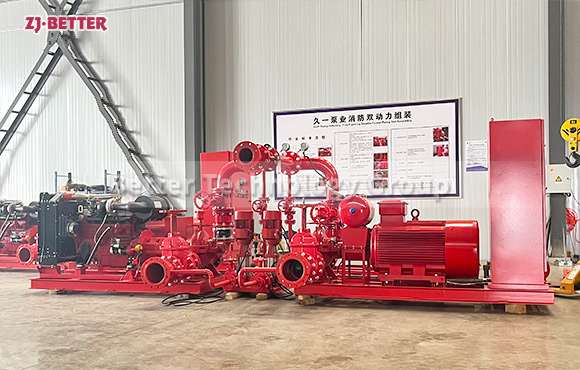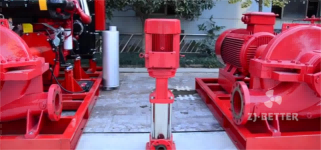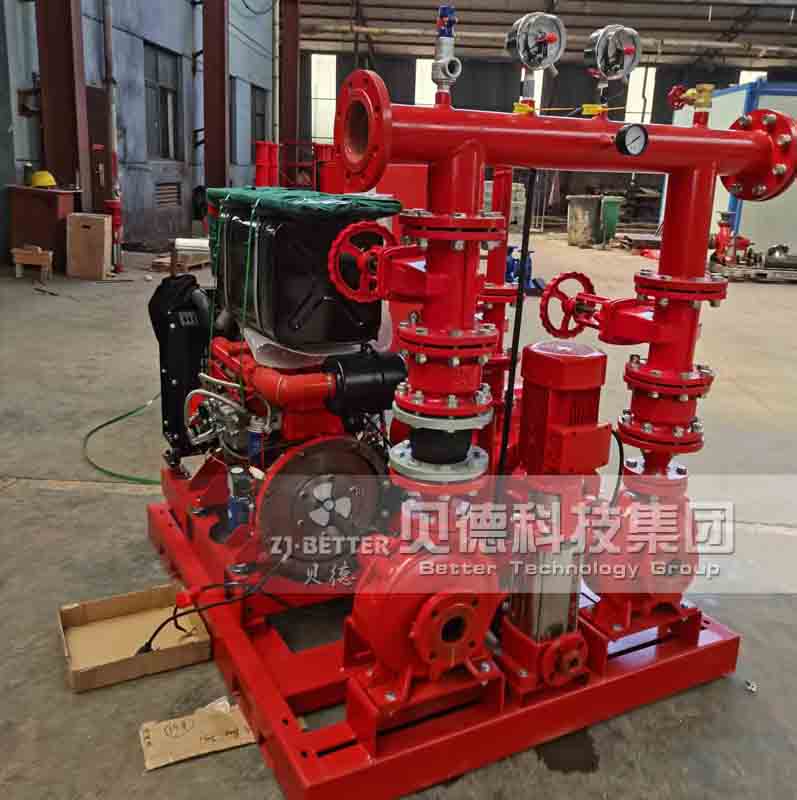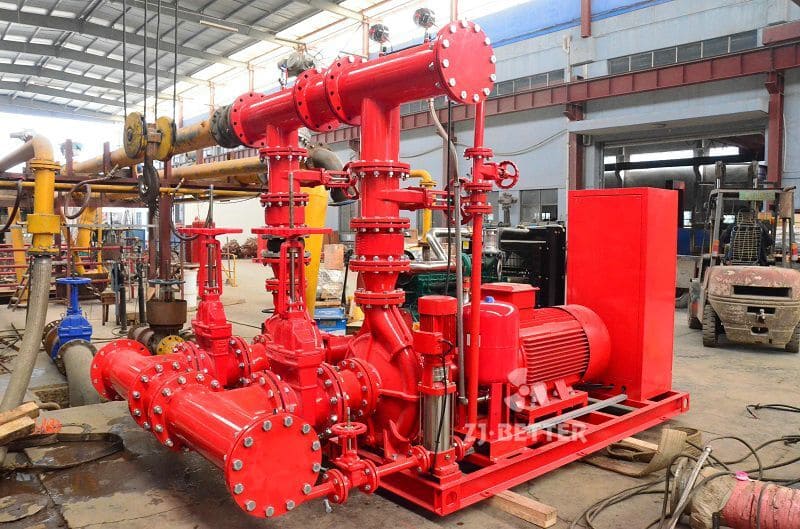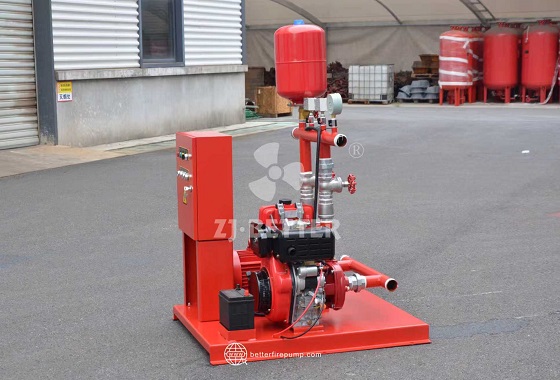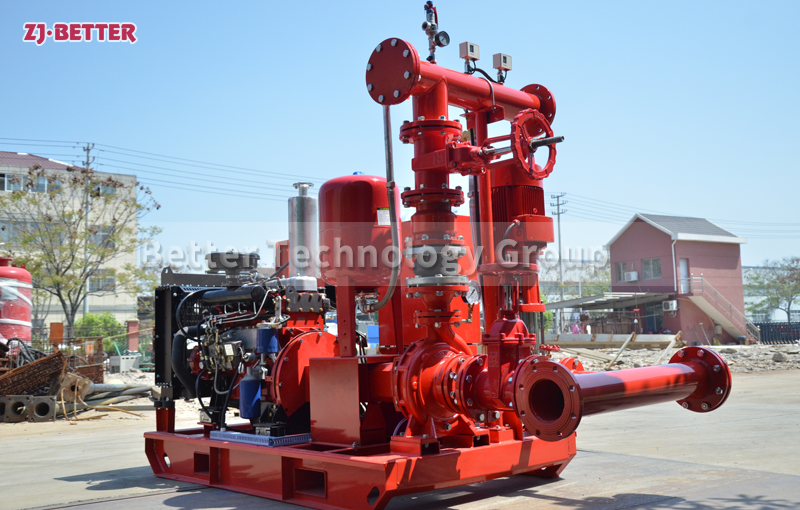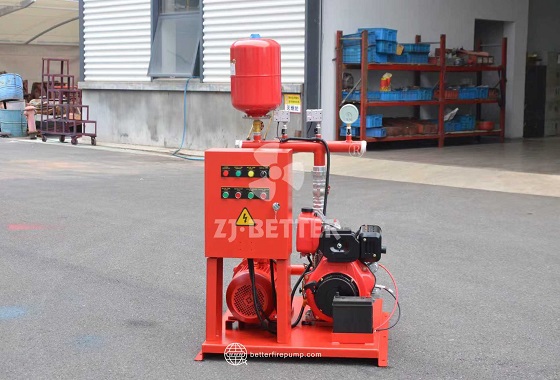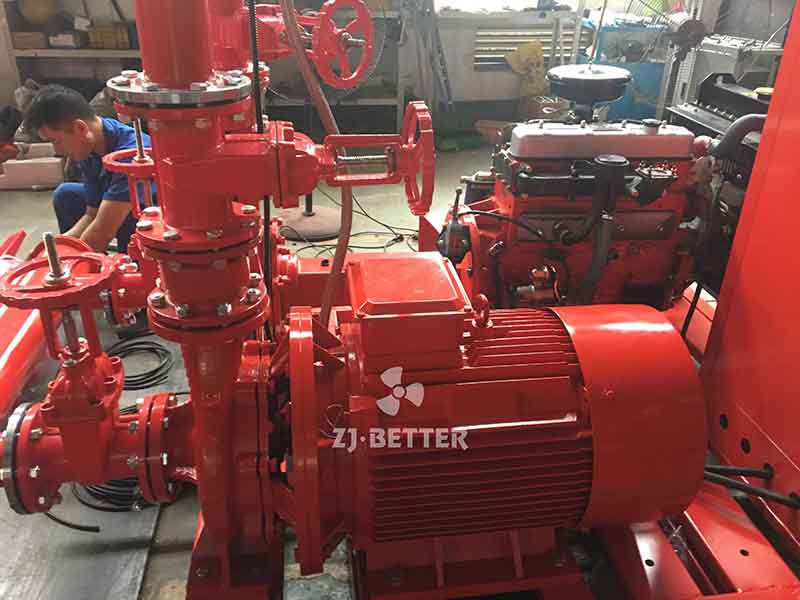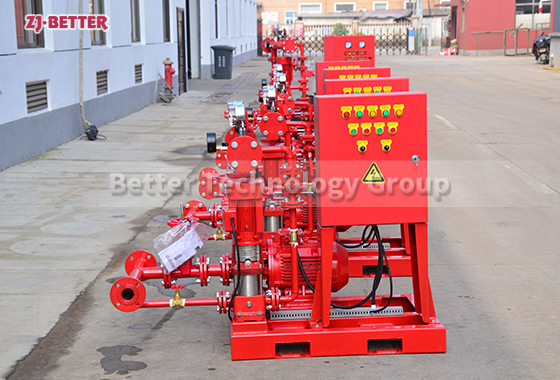Better Manufactures Complete Standard Fire Pump Sets
The conventional electric pump is the main pump, the diesel engine pump is the backup pump, and the voltage stabilizer pump plays a role in the stabilization of the whole system. When the electric pump fails or the mains is cut off, the control cabinet will receive the pressure gauge from the electric contact. When the signal comes, the diesel engine pump will be started within 5 seconds, and the rated working condition will be reached within 20 seconds to ensure the normal operation of the fire extinguishing work.
1. Easy to install: The pump set only needs to connect the inlet and outlet to the main line through flanges, etc., low in and high out, and the factory has completed everything on the construction site
2. Easy to debug: The equipment adopts PLC modular design, and personnel with primary circuit knowledge can operate and debug it
3. Reduce installation time: Since the installation steps are relatively simple compared to a single unit, the working hours are greatly shortened
4. Realize integration: diesel engine pump, electric pump, voltage stabilizer pump, control cabinet, etc. are all on one base, the company adopts robot specialized production, and the quality is stable
5. Space saving: Compared with traditional on-site installation, the installation space is greatly saved
6. Pre-installation of electrical circuits: The power cables and sensor cables between the control cabinet and each pump have been connected before leaving the factory. When you arrive at the site, you only need to connect them to the main power supply according to the drawings.


